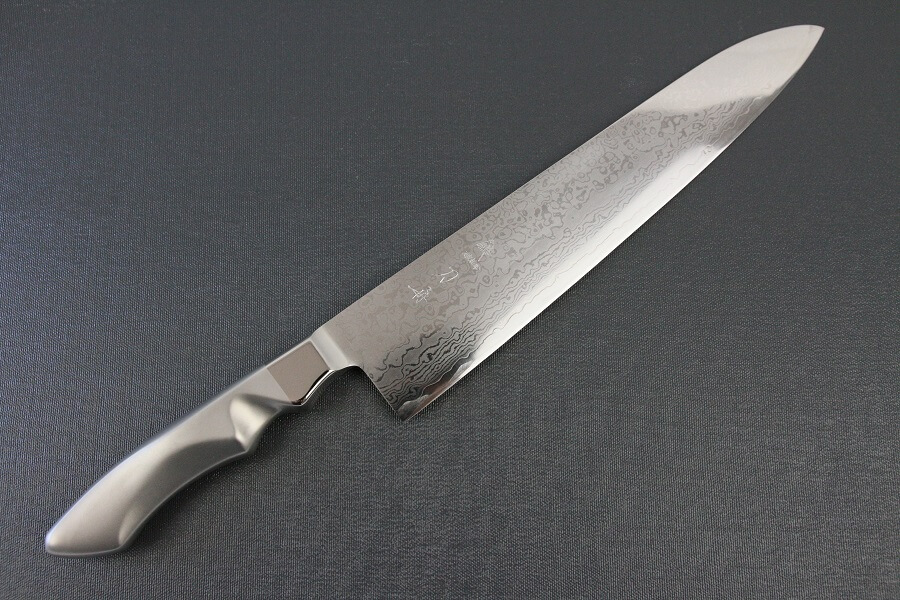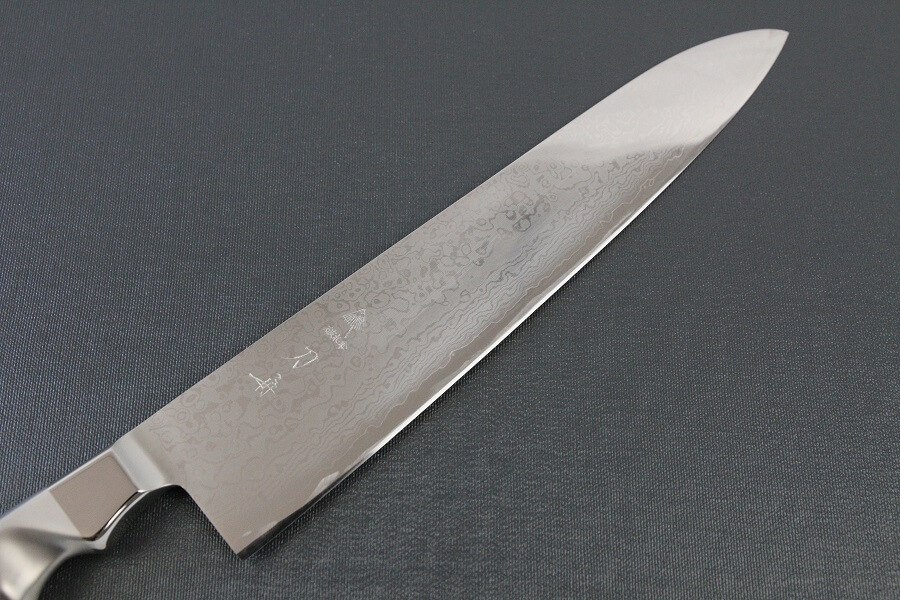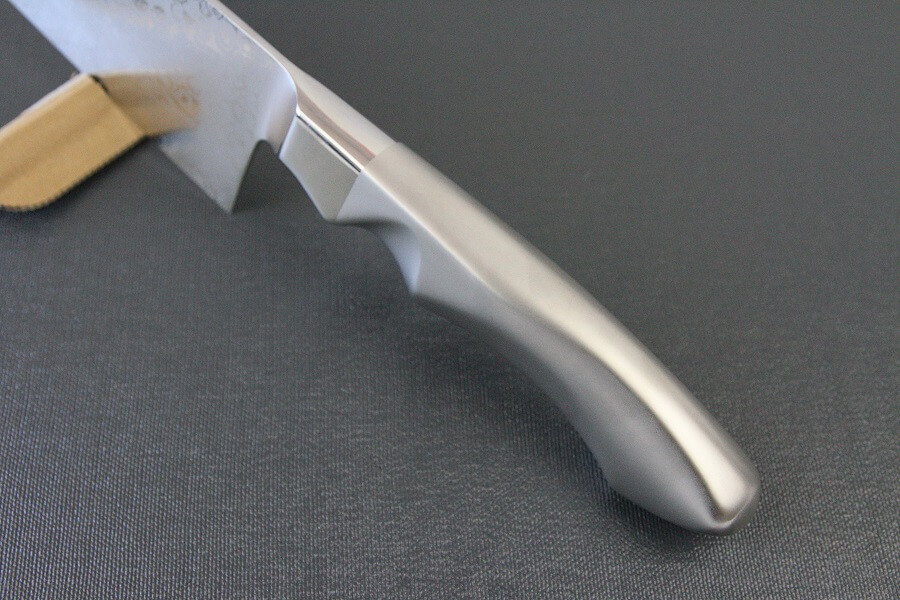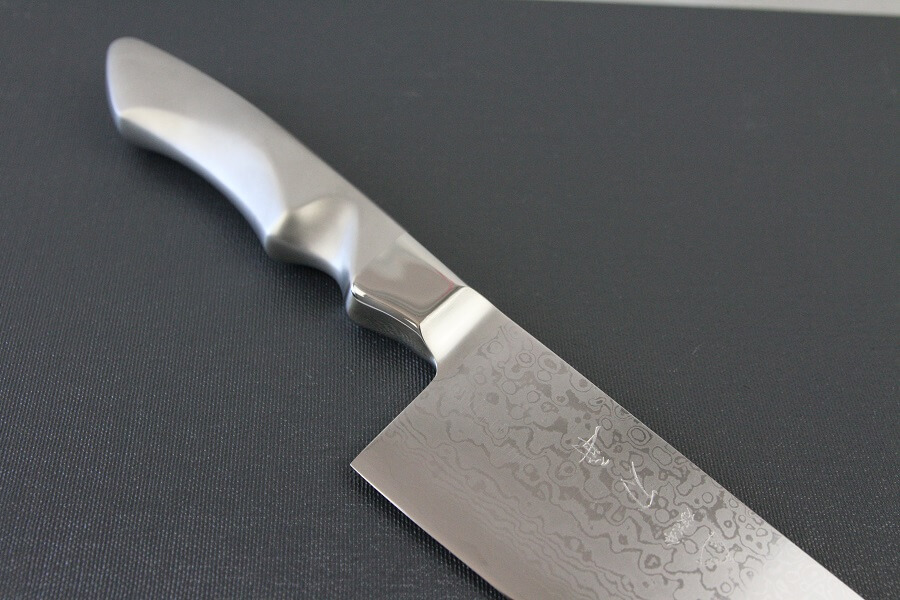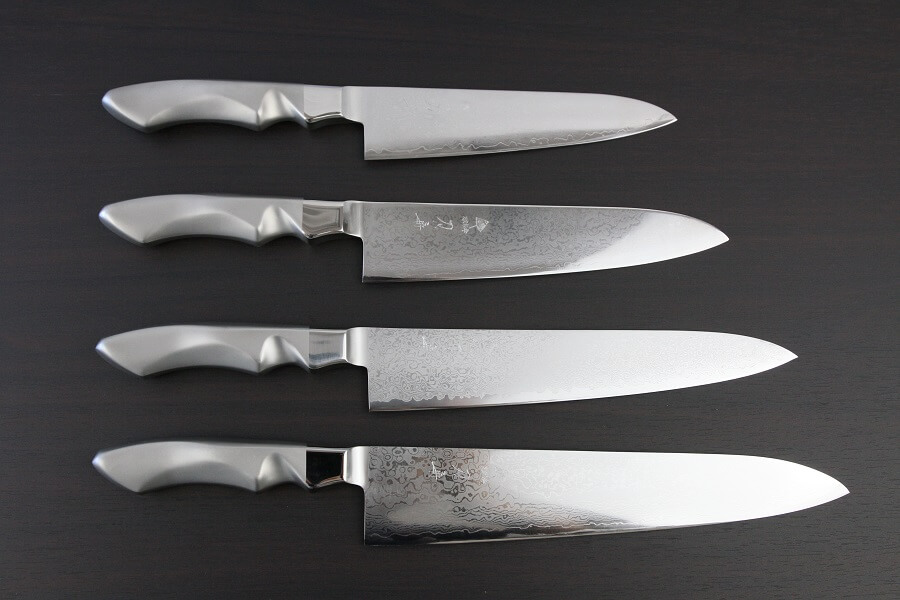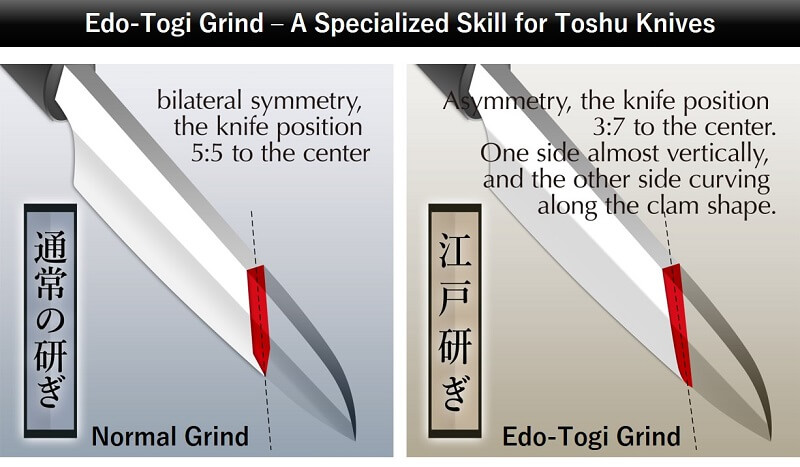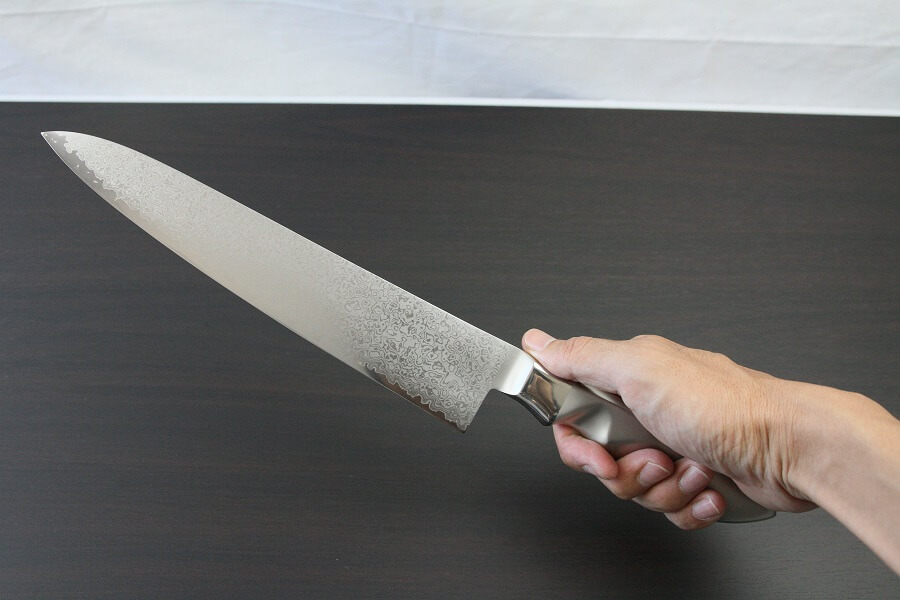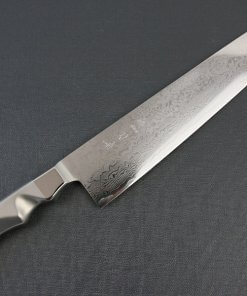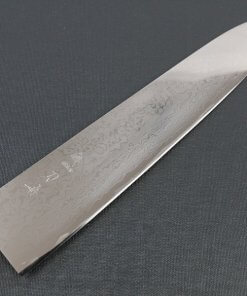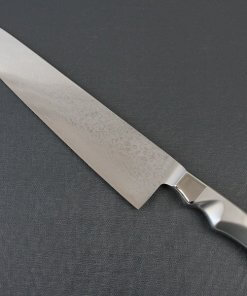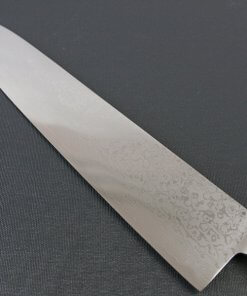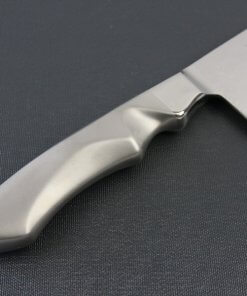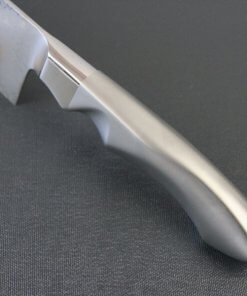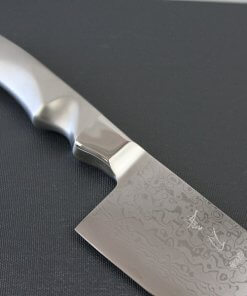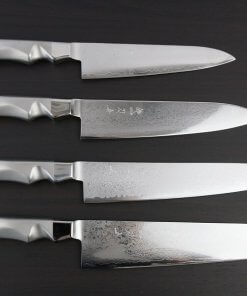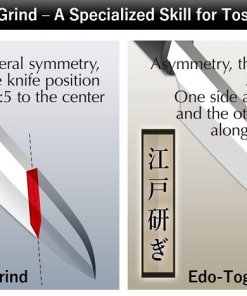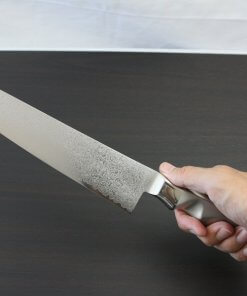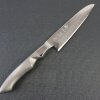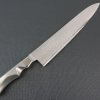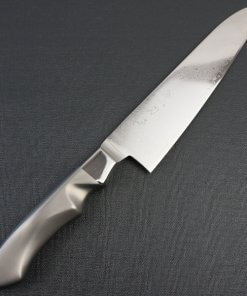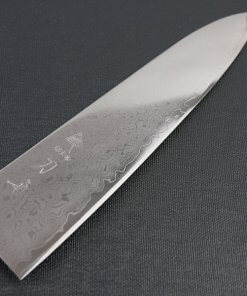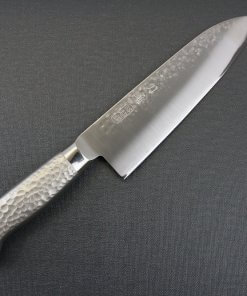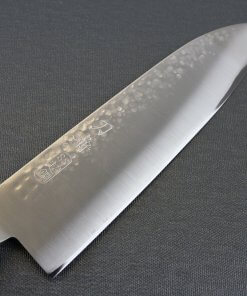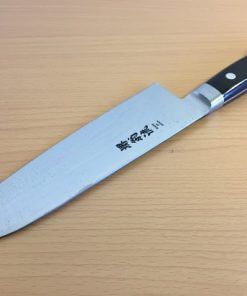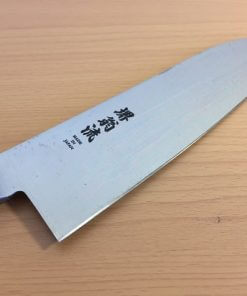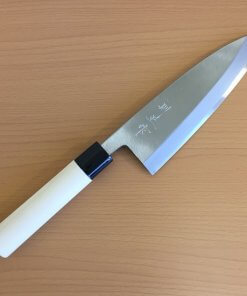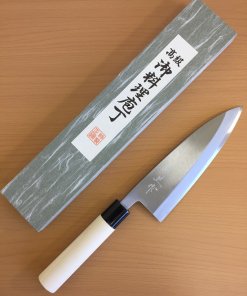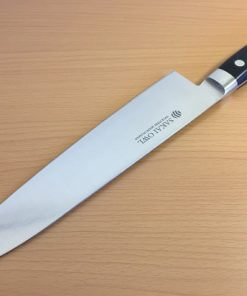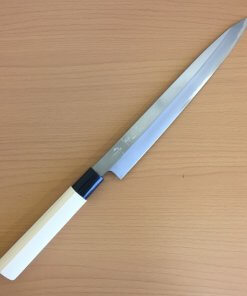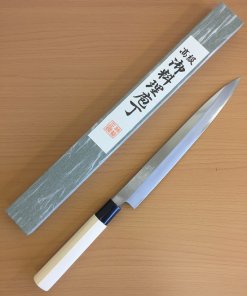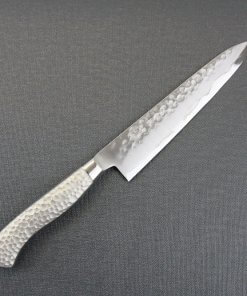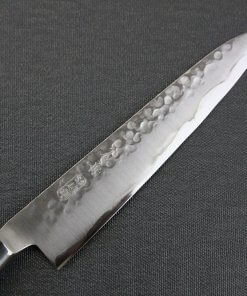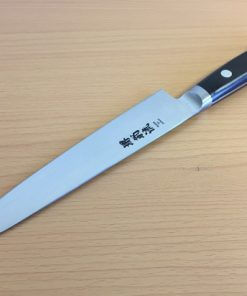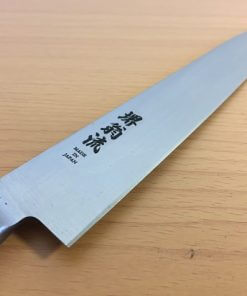Toshu Damascus Monaka, Gyuto, Stainless Steel 270mm/10.6in
$463.83
Chef knives made by Toshu have all of five features that finest kitchen knives must have. Toshu makes knives using traditional Japanese swordsmiths’ techniques, “Hizukuri Forging” and “Edo-Togi grind”.
Toshu Damascus Monaka chef’s knives are ones of the most practical models among Toshu products. They have beautiful Damascus pattern on their blades and have luxury looks. (actually they are!)
The blade has 65 layers Damascus, which is made by forging highest quality VG-10 stainless steel material. The finest metal material is made by Takeo Metal, one of the most famous material providers for its highest quality. The Damascus blade is totally different from other Damascus-like knives which is made by mixing nickel‐chromium to form damascus pattern. Therefore, forged Toshu Damascus blade has overwhelming cutting quality beyond comparison to other similar knives. Of course, Toshu's Edo-togi grind will be made to finishing up pre-sharpening before shipping to you.
In addition, handles are also made of 18-8 stainless steel. This metal handle is designed to fit your palm, which enables you to handle the knife just like a part of your body. This unique but well-designed handle is highly evaluated by professional chefs.
Thanks to stainless steel materials and their structure, they never get rust and are dish-washer safe!
Full lineup of Toshu Damascus Monaka knives
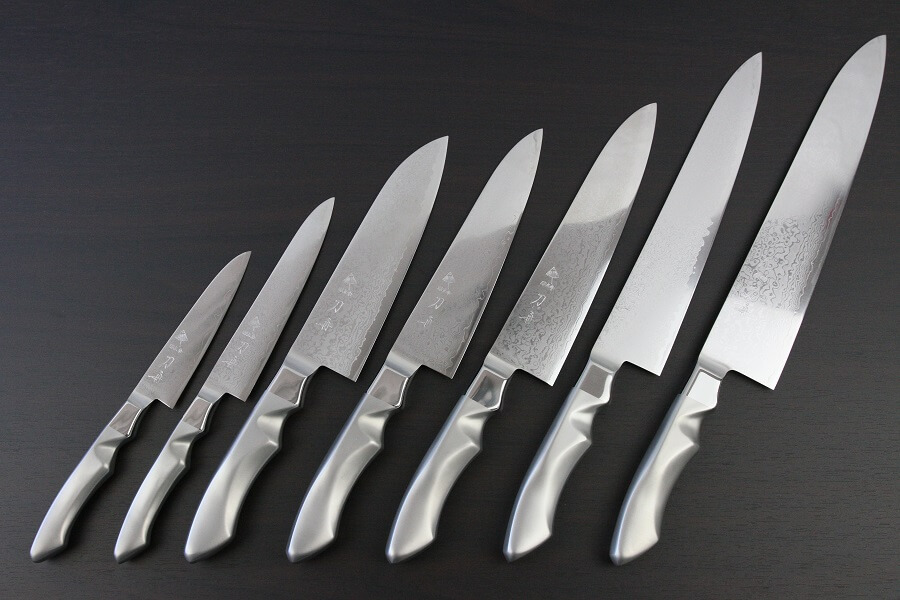
This Gyuto has a longest blade of 270 mm / 10.63 inches. The blade is large enough to cut any big stuff, and it is sharpened by special craftsmanship so that its performance lasts long.
Hizukuri Forging
This forging method is traditionally used for Japanese sword making since Samurai era. Heating material up to 1,000 degrees Celsius, craftsmen hammer the material repeatedly to make it hard and to form the shape of blade.
Edo-Togi Grind
This grinding method can be done by limited artisans because it requires high level skills. Each side of the blade is sharpen asymmetrically in this method; one side is sharpen almost vertical, whilst the other side is to form clam-like curving shape; and edge of the blade should be placed at the 3:7 position to the center. This technique gives tremendous advantages to the knives as described below.
Making Process of Toshu Chef Knives
Making knives with these traditional techniques by hands requires high level skills and takes longer time than making by machines. However, every step of the making process has important meaning and effects which has been elaborated by past artisans. Thanks to the complicated 60 steps by experienced craftsmen, Toshu knives has all of five features that finest kitchen knives must have. They are 1)hardness which affects cutting quality and makes hard to get chipped, 2)flexibility for good cutting quality, 3)abrasion resistance to keep cutting quality for longer time, 4)fatigue resistance which keeps cutting power for longer time, and 5)corrosion resistance. Once you use a Toshu knife, you’ll instantly feel the difference between our product and ordinary knives which are die cut from metal plate and mass-manufactured by machines.
In addition, Toshu knives prevent odors of the steel from spreading to foods, and fat of foods are hard to stick on the blades. Many professional chefs have used our knives regularly.
Furthermore, well-made knives are easy to be repaired. Sending back your knife to us, Toshu craftsmen are happy to repair and restore it as if it’s new. It is only possible for the handmade knives, therefore our knives can be used for many years to come.

